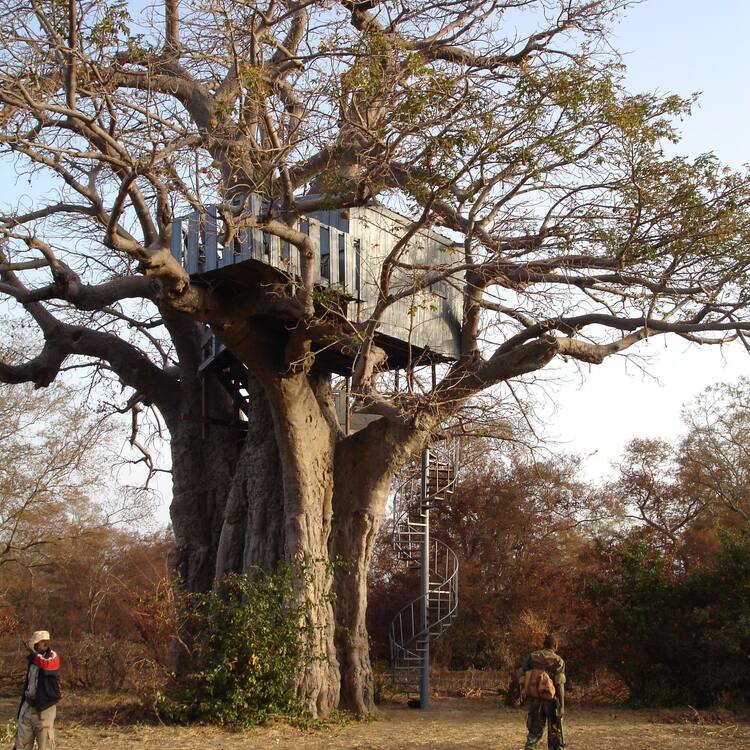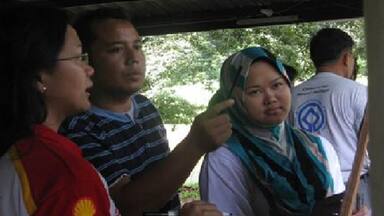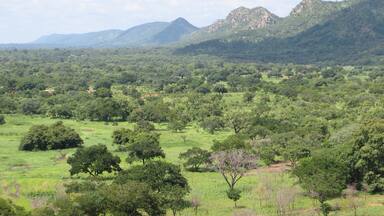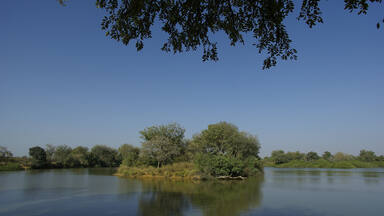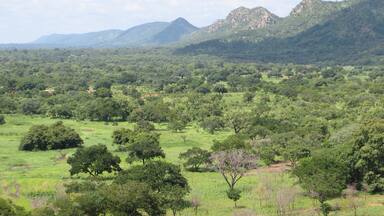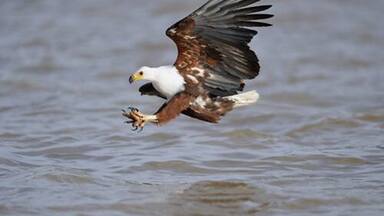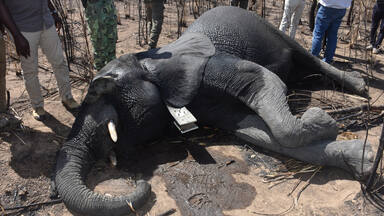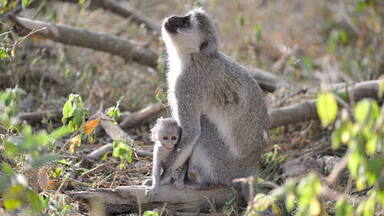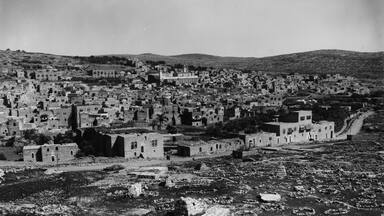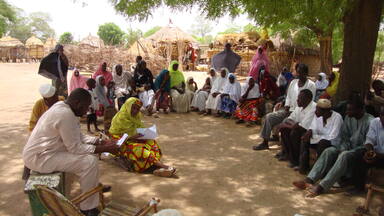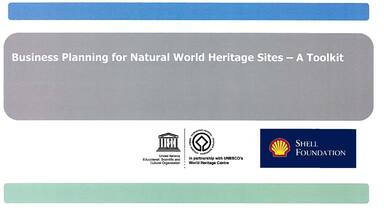W-Arly-Pendjari Complex
W-Arly-Pendjari Complex
This transnational extension (Benin, Burkina Faso) to the W National Park of Niger, inscribed in 1996 on the World Heritage List, cover a major expanse of intact Sudano-Sahelian savannah, with vegetation types including grasslands, shrub lands, wooded savannah and extensive gallery forests. It includes the largest and most important continuum of terrestrial, semi-aquatic and aquatic ecosystems in the West African savannah belt. The property is a refuge for wildlife species that have disappeared elsewhere in West Africa or are highly threatened. It is home to the largest population of elephants in West Africa and most of the large mammals typical of the region, such as the African Manatee, cheetah, lion and leopard. It also harbours the only viable population of lions in the region.
Description is available under license CC-BY-SA IGO 3.0
Complexe W-Arly-Pendjari
Cette extension transnationale (Bénin, Burkina Faso) au Parc national du W au Niger, inscrit en 1996 sur la Liste du patrimoine mondial, couvre une vaste étendue de savane soudano-sahélienne intacte, avec des types de végétation comme les prairies, les brousses arbustives, les savanes boisées ou les vastes forêts-galeries. Il s’agit du plus grand et du plus important continuum d’écosystèmes terrestres, semi-aquatiques et aquatiques de la ceinture de savanes d’Afrique de l’Ouest. Le bien sert de refuge à des espèces animales qui ont disparu ailleurs en Afrique de l’Ouest ou sont très menacées. Il accueille notamment la plus grande population d’éléphants d’Afrique de l’Ouest et la plupart des grands mammifères typiques de la région, comme le lamantin d’Afrique, le guépard, le lion ou le léopard. Il abrite aussi la seule population viable de lions de la région.
Description is available under license CC-BY-SA IGO 3.0
Conjunto de la W, Arly y Pendjari
Esta extensión transnacional del Parque Nacional de la W del Níger, inscrito en 1996, abarca terrenos pertenecientes a Benin y Burkina Faso. El sitio es una vasta sabana intacta de tipo sudanés-saheliano con diversas clases de formaciones vegetales: praderas, malezas arbustivas, sabanas boscosas y bosques abiertos. Constituye el conjunto más vasto y continuo de ecosistemas de sabana terrestres, acuáticos y semiacuáticos del África Occidental. Su territorio no sólo sirve de refugio a especies animales amenazadas o en peligro de extinción, sino que además alberga la mayor población de elefantes y la única población viable de leones del África Occidental, y también una gran mayoría de los grandes mamíferos característicos de esta región, como manatíes, gatopardos y leopardos.
source: UNESCO/CPE
Description is available under license CC-BY-SA IGO 3.0
W-Arly-Pendjari Complex
Het W-Arly-Pendjari Complex is een transnationale uitbreiding van het ‘W’ Nationaal Park in Niger dat sinds 1996 op de Werelderfgoedlijst staat, met een groot gebied in Benin en Burkina Faso. Het omvat een intact landschap van savannes typisch voor de Sahel-Soedanese regio met graslanden, landschappen waar struiken of bomen domineren en uitgebreide galerijbossen. Het is het grootste en belangrijkste aaneengesloten gebied van land-, semi-water en water-ecosystemen in de West-Afrikaanse gordel van savannes. Het gebied vormt een thuis voor allerlei soorten wilde dieren, waaronder vele ernstig bedreigde soorten. Zo leeft de grootste populatie van olifanten in West-Afrika er, naast soorten als de West-Afrikaanse lamantijn (zeekoe), luipaarden en jachtluipaarden. Het omvat de enige levensvatbare leeuwenpopulatie in de regio.
Source: unesco.nl
Outstanding Universal Value
Brief synthesis
The W-Arly-Pendjari Complex is a transnational property shared between the Republic of Niger, Burkina Faso and the Republic of Benin in West Africa. Located in the transition zone between the savannas of the Sudanese region and the forested Guinean region, the W-Arly-Pendjari Complex lies at the heart of the most extensive protected area block in the West African Woodlands/Savanna Biogeographical Province and includes the largest and most important continuum of terrestrial, semi-aquatic and aquatic ecosystems in the West African savanna belt. The property encompasses 1,714,831 ha and is a contiguous mosaic of nine protected areas. It includes the trinational complex of W Regional Park (shared between Benin, Burkina Faso and Niger), Arly National Park (Burkina Faso), Pendjari National Park (Benin) and the hunting zones of Koakrana and Kourtiagou (Burkina Faso) and Konkombri and Mékrou (Benin).
Criterion (ix): Stretching across three countries, W-Arly-Pendjari Complex is the largest and most important continuum of terrestrial, semi-aquatic and aquatic ecosystems in the West African savanna belt. Situated within the Volta River basin it comprises a dynamic system, where the ebb and flow of water with alternating wet and dry seasons creates a rich variety of plant communities and associated fauna. The Complex is a major expanse of intact Sudano-Sahelian savanna, with numerous and diverse types of vegetation such as grassland, shrub, wooded savannah, open forests and extensive gallery and riparian forests as well as the rare semi-deciduous forest of Bondjagou within Pendjari National Park. The long-term effects of fire linked to human occupation, perhaps dating back some 50,000 years, have shaped the vegetation of the property, and the continued traditional use of fire maintains the diversity of vegetation types, which in turn provide habitat for the property’s characteristic wildlife.
Criterion (x): The property and the broader landscape are a refuge for species of fauna that have disappeared or are highly threatened in most of the rest of West Africa. The W-Arly-Pendjari Complex is particularly crucial to the conservation of the last healthy populations of mammals belonging to the Sahelian and Sudanian domains. The Complex includes the largest and most ecologically secure elephant population in West Africa, representing 85% of the region's savanna elephants. It also protects almost the complete assemblage of characteristic flora and fauna, providing crucial habitat for most of the large mammal species typical of West Africa, such as African Manatee, Cheetah, Lion, Leopard, African Wild Dog and Topi Antelope. It harbours the only viable population of lion in the area and probably the only population of cheetah in West Africa. The site exhibits particularly high levels of endemism among fish species and is home to seven of the nine endemic fish species reported in the Volta Basin.
Integrity
The W-Arly-Pendjari Complex is of sufficient size to permit unimpeded ecological function and the overall integrity of the system is good amongst protected areas in West Africa, many of which have suffered significant degradation from anthropogenic pressures. Covering a comparatively large area of 1,714,831 ha, the trinational property contains a representative suite of Sudano-Sahelian ecosystems that are in good condition. It includes a large variety of habitats indispensable for the survival of characteristic species and is large enough to support the healthy populations of large mammal species such as elephant and lion which range over wide territories.
The W National Park and the Arly-Pendjari Regional Park complexes are connected through the four hunting reserves, allowing for connectivity across the property and free movements of animals in the complex. Hunting within the hunting reserves has, to date, been sustainably managed and these reserves include natural systems and habitat that are regarded as being of a similar quality to that within the national parks, thereby enhancing resilience. The hunting reserves would be considered equivalent to IUCN Category VI and the activity, at the time of inscription, does not appear to be negatively impacting on the property’s Outstanding Universal Value as a whole.
The buffer zone of W-Arly-Pendjari Complex consists of areas of different protection status (hunting reserves, wildlife reserves, and special legally designated buffer zones) all established by national laws and covers a total area of 1,332,147 ha. The buffer zones are designed to strengthen integrity and are managed as to mitigate impacts from surrounding human activities.
Protection and management requirements
The property benefits from long-term legal protection through national laws and receives financial and technical support from the States and some development partners. Five of the protected areas making up the W-Arly-Pendjari Complex are protected as national parks (managed as IUCN Category II). The four hunting reserves within Benin and Burkina Faso are also managed under the same regime as national parks, noting that sustainable hunting is permitted. The hunting in these reserves is regulated through annual quotas, closely monitored and aimed at generating benefits for local communities and conservation of nature.
Although the boundaries of the property are clearly defined, known by the surrounding population and regulated, there are threats such as poaching, illegal grazing and encroachment of agricultural land which persist. Adequate measures must be undertaken to address these threats including working closely with agricultural development sectors to regulate, incentivize and raise awareness among communities surrounding the property. Monitoring of the scale of transhumance activities, which are a long-standing use, is important to ensure so that it remains sustainable in relation to the property’s Outstanding Universal Value.
The property is managed in Benin by the Centre National de Gestion des Réserves de Faune (CENAGREF); in Burkina Faso, Arly National Park is managed by the Office National des Aires Protégées (OFINAP) and W National Park, Burkina Faso is managed by the Direction Générale des Eaux et Forêts (DGEF). The W National Park, Niger is managed by the Direction Générale des Eaux et Forêts (DGEF) / Ministère de l'Environnement et du Développement Durable (MEDD). The multi-agency responsibilities across the three States Parties require considerable and sustained effort to ensure effective coordination and harmonization of protected area policies and practice. All national parks in the Complex have a 10-year management plan all following a joint “Schéma Directeur d’Aménagement du complexe” to foster coordination. A workable system of transboundary governance is in place under a tripartite management agreement (now quadripartite with the integration of the State Party of Togo). However, ongoing efforts are needed to improve the levels of transnational cooperation for the property.
Ongoing attention is needed to ensure that the traditional application of fire continues to support fire regimes which maintain Outstanding Universal Value, particularly under the influence of climate change. Similarly the three States Parties should work cooperatively with UEMOA (Union Economique et Monétaire Ouest Africaine) to plan, monitor and act such that transhumance movements taking place in the property and its buffer zones do not adversely impact on the Outstanding Universal Value.
There is also a need to sustain long-term adequate funding for the W-Arly-Pendjari Complex. The States Parties should ensure that adequate government funding is provided to manage the Complex and the necessary coordination. The West African Savannah Foundation (FSOA) created in 2012 is an endowment fund which requires further investment to ensure sustainability. It is critical that the FSOA becomes a source of funding for the entire Complex and continues to be supported and grow. Furthermore, it is important that all protected areas within the Complex are eligible to access this endowment fund.